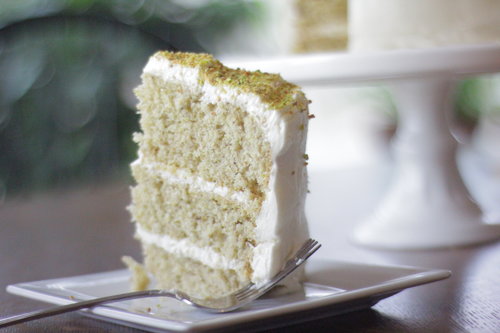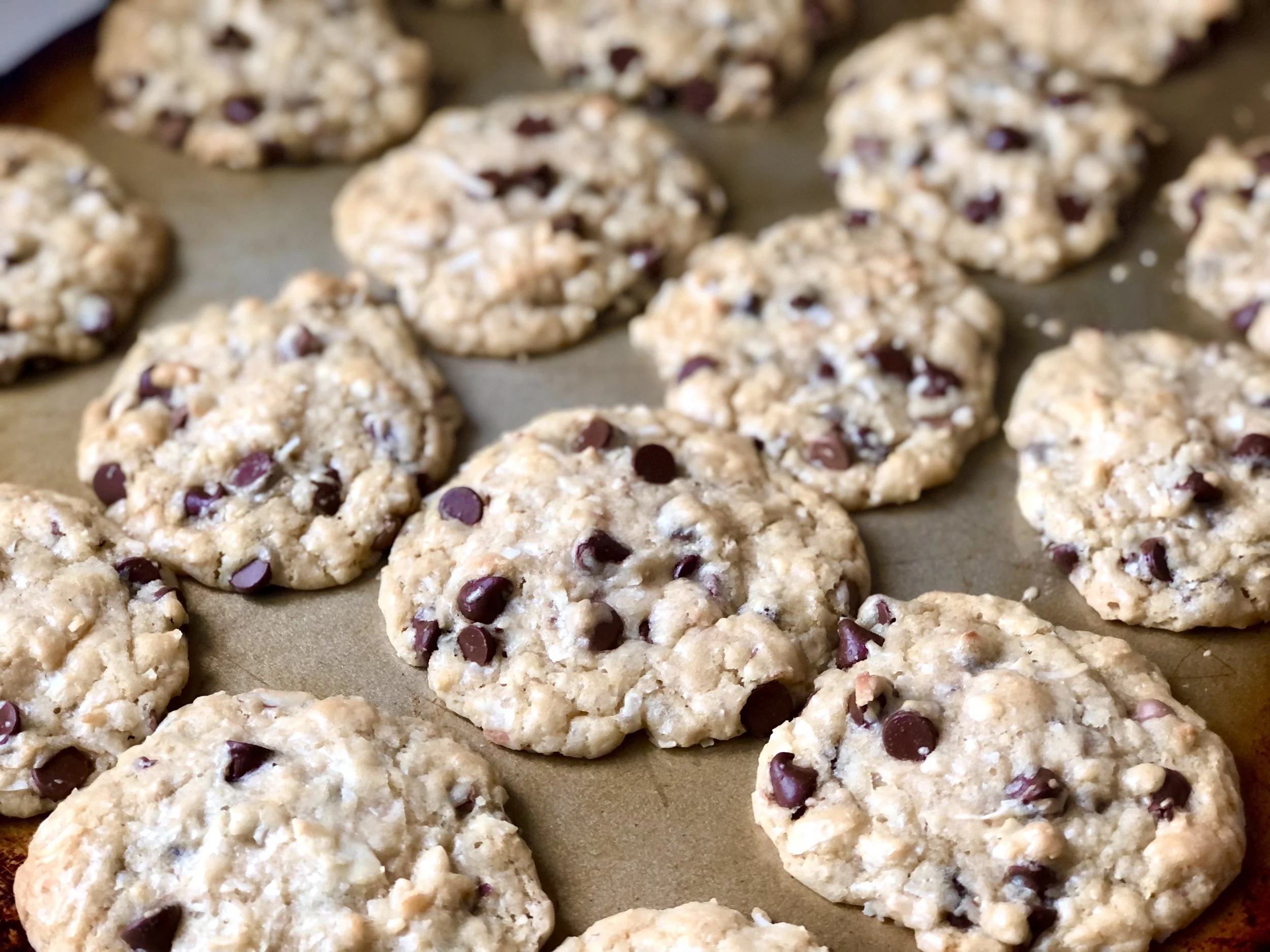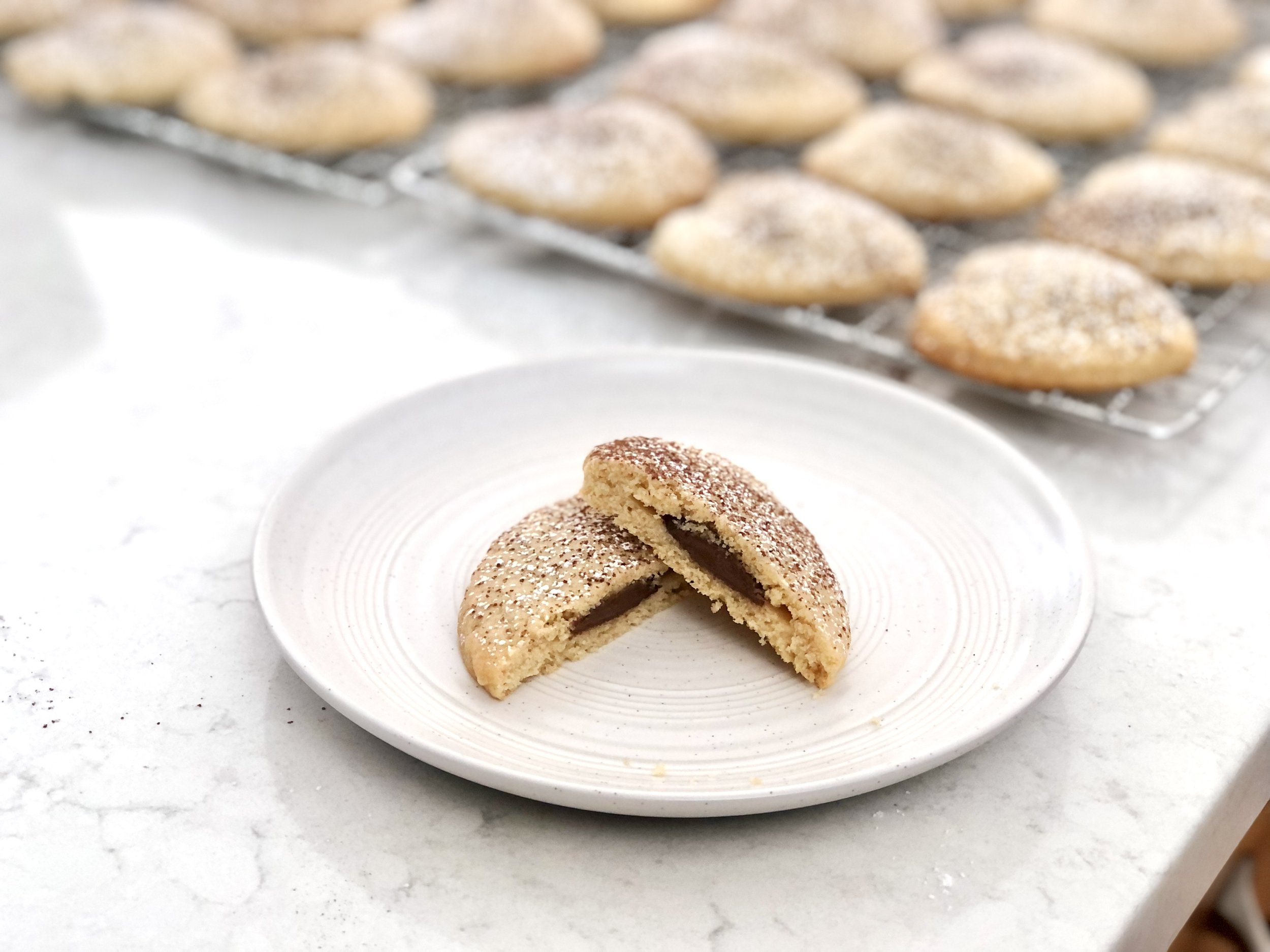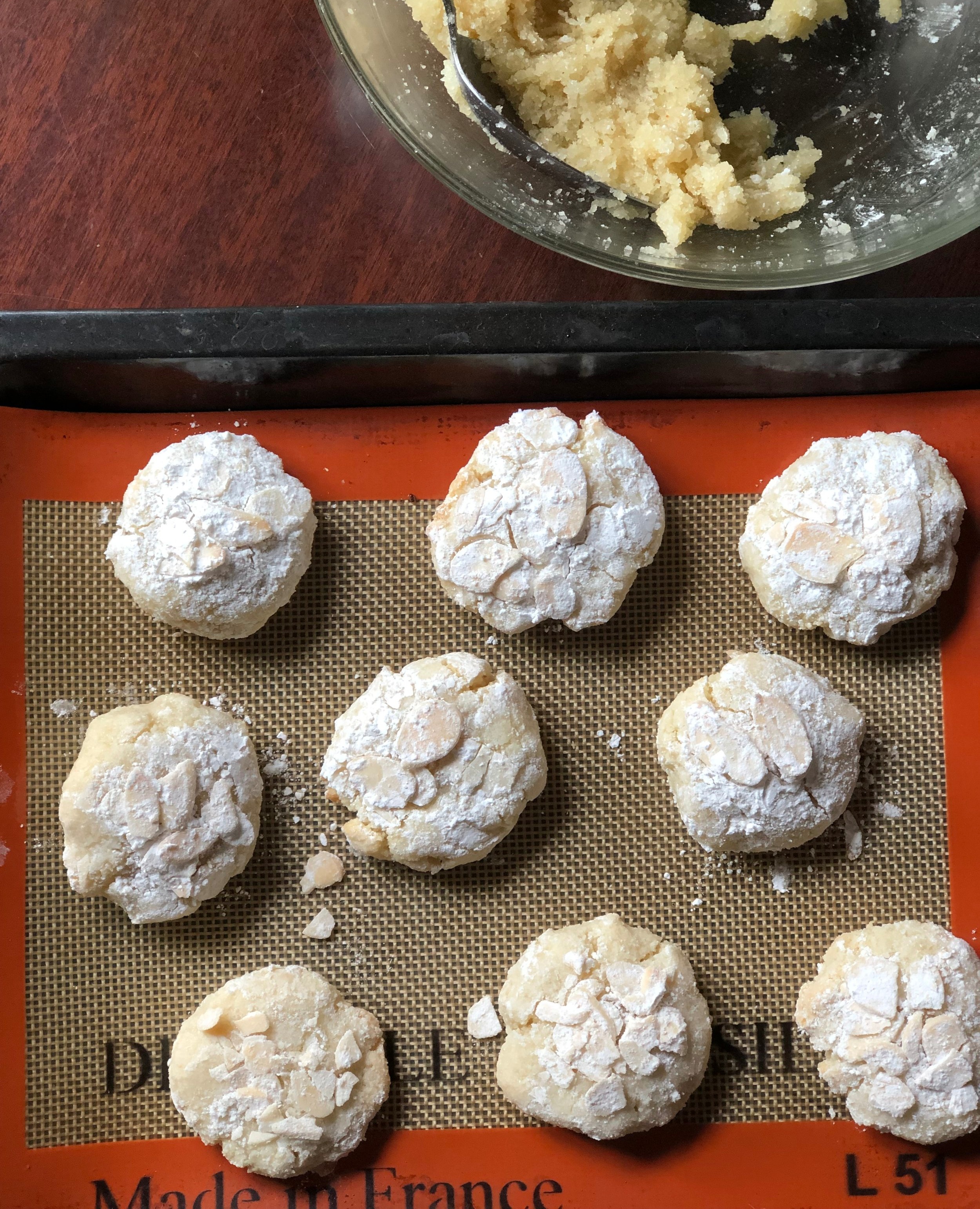Pistachio Cake with Honey Vanilla Buttercream
/Last Updated August 10, 2024
Pistachios remind me of Christmas. In fact, just this morning I had my first pang of "I miss Christmas," which usually hits me around July. My family rarely eats/buys/uses pistachios, but we always have bowls of them out for Christmas. It's tradition. Beyond that, I never thought too much of cooking or baking with them because they were only ever around when we were already over inundated with food. And yes, they are expensive and you may have to shell them.
Then I went to Europe where pistachio gelato is the best flavor and the line up of pastries always includes pistachio right next to the chocolate and vanilla. Pistachio was this flavor, this nut, that I had not tapped into. And I've only just started. Oh the thrills! This cake was a light bulb of "What have I been missing out on!?" My poor family and friends, all these years and I didn't make this for them. How selfish of me. Selfish no more, here is the recipe so you can revel in the glory with me!
This cake is fluffy, light, with a wonderful, nutty pistachio flavor that is not overbearing. It has a slight elegance to it, something about being more than 2 layers and the white frosting.
The cake ingredients are fairly standard aside from the pistachios. If you have pistachio flour ready-made available to you, you can save yourself step. Maybe try Amazon, you can find anything online these days! If not, pistachios should be readily available, and you can make pistachio flour yourself by grinding them for a few seconds in a food processor. I don’t have a food processor in Italy, so I get by with an electric coffee grinder which works great!
The frosting is a light and creamy, not-too-sweet cooked frosting. Ever since the first time I’ve made a cooked frosting, the raves come pouring in about how it’s the best frosting they’ve ever eaten. Between cooked frostings and Italian meringue buttercream, I’ve rarely looked back at the traditional American buttercream that is mostly sugar. It has its place, but it seems the general consensus between anyone who has tried some of my cakes and cupcakes that a not-too-sweet frosting is GREATLY appreciated. Give the cooked frosting below a try and see if you don’t fall in love with it!
This post may contain affiliate links. If you make a purchase using these links, Jennyblogs may receive a small commission, at no extra cost to you. This helps to support Jennyblogs. Where possible, links are prioritized to small businesses and ethically and responsibly made items. For further information see the privacy policy. Grazie!
Recipe adapted from Joanne eats well with others
Pistachio Cake with Honey Vanilla Buttercream
Makes 1 three layer 6-inch round cake. Serves about 8
Ingredients:
For the Pistachio Cake
1/2 cup / 63g shelled pistachios
1 1/4 cups / 164g cake flour
scant 1/2 cup / 47g all-purpose flour
1 1/2 tsp / 7g baking powder
1/2 tsp / 2.5g baking soda
1/2 tsp / 2.5g salt
scant 1/2 cup / 100g oil
3/4 cup / 150g sugar
1 1/2 tsp / 7g vanilla extract
1 egg
3/4 cup / 178g ice water
1 egg white
1/4 tsp cream of tartar
For the Honey Vanilla Buttercream
3/4 cup / 150g sugar
3 Tbsp / 20g all-purpose flour
3/4 cup / 178g milk
3 Tbsp / 44g heavy whipping cream
3/4 cup / 170g butter, cubed
1 tsp / 5g vanilla extract
2 Tbsp / 42g honey
Directions:
Oven 350°F / 177°C. Grease and line the bottoms of three 6-inch cake rounds with parchment paper.
Make the Pistachio Cake
Place the pistachios in a food processor and pulse until coarsely chopped. Set aside 2 tablespoons. Continue to pulse remaining pistachios until finely ground, like flour in texture.
In a medium bowl, whisk together pistachio flour, cake flour, all-purpose flour, baking powder, baking soda, and salt.
In a normal bowl or bowl of a stand mixer, beat together oil, sugar, and vanilla. Add egg and beat until just combined.
With the mixer on low, add the pistachio flour mixture to the batter in three additions, alternating with the ice water, beginning and ending with pistachio flour mixture. After each addition mix until just combined.
In another medium bowl, beat the egg white with cream of tartar until soft peaks form, about 3-4 minutes. Gently fold the egg white into the cake batter, starting with just a spoonful to lighten the batter, then continue on with the rest.
Pour batter into prepared cake pans and bake for 25-30 minutes, or until toothpick inserted in center comes out clean. Allow cakes to cool in pans for 10 minutes, then flip onto a wire rack to cool completely while you make the buttercream. Remove parchment paper from bottoms.
Make the Honey Vanilla Buttercream
In a medium saucepan, whisk together sugar and flour. Add milk and cream and place over medium heat, stirring frequently, until mixture boils and thickens, about 5-10 minutes.
Once thickened, pour mixture into a bowl of a stand mixer. Beat on high until cool, 8-10 minutes. Reduce speed to medium low and add butter, piece by piece, until fully incorporated. Increase speed and beat a few minutes, until light and fluffy. Beat in vanilla and honey.
Assembly
Use a serrated knife to level off the top of the cakes. Cut off just as much as necessary to make the top of the cake level and flat. If you prefer domed cakes, leave one layer uncut for the top. Place one leveled layer on desired serving plate, cut side down. Generously spread frosting over top and place second layer on top, again cut side down. Top with more frosting. Finish with top layer, domed side up if desired. Frost the whole cake. Top with remaining 2 tablespoons chopped pistachios.
Jenny's Notes:
For an 8 - 9in / 20-23cm 3 layer cake, double this recipe.
If your buttercream seems too thin or soupy after you've added the butter, stick it in the fridge for a few minutes, then rewhip. Most likely it has not cooled down enough to stabilize.
These layers are not overly thick, so don't worry if the amount of batter in the pans seems low or they don't rise very high, you still made it right! Once all three layers are stacked on top of one another, it makes for a nicely high, but not towering, 6 inch round cake.
If you don’t have 3 6-inch pans, it is easier to split the batter in two and bake in two pans, instead of 3. You then have the option of making a two layer cake, or cutting each layer in two for a four layer cake.

Pistachio Cake with Honey Vanilla Buttercream
Ingredients
Instructions
- Oven 350°F / 177°C. Grease and line the bottoms of three 6-inch cake rounds with parchment paper.
- Place the pistachios in a food processor and pulse until coarsely chopped. Set aside 2 tablespoons. Continue to pulse remaining pistachios until finely ground, like flour in texture.
- In a medium bowl, whisk together pistachio flour, cake flour, all-purpose flour, baking powder, baking soda, and salt.
- In a normal bowl or bowl of a stand mixer, beat together oil, sugar, and vanilla. Add egg and beat until just combined.
- With the mixer on low, add the pistachio flour mixture to the batter in three additions, alternating with the ice water, beginning and ending with pistachio flour mixture. After each addition mix until just combined.
- In another medium bowl, beat the egg white with cream of tartar until soft peaks form, about 3-4 minutes. Gently fold the egg white into the cake batter, starting with just a spoonful to lighten the batter, then continue on with the rest.
- Pour batter into prepared cake pans and bake for 25-30 minutes, or until toothpick inserted in center comes out clean. Allow cakes to cool in pans for 10 minutes, then flip onto a wire rack to cool completely while you make the buttercream. Remove parchment paper from bottoms.
- In a medium saucepan, whisk together sugar and flour. Add milk and cream and place over medium heat, stirring frequently, until mixture boils and thickens, about 5-10 minutes.
- Once thickened, pour mixture into a bowl of a stand mixer. Beat on high until cool, 8-10 minutes. Reduce speed to medium low and add butter, piece by piece, until fully incorporated. Increase speed and beat a few minutes, until light and fluffy. Beat in vanilla and honey.
- Use a serrated knife to level off the top of the cakes. Cut off just as much as necessary to make the top of the cake level and flat. If you prefer domed cakes, leave one layer uncut for the top. Place one leveled layer on desired serving plate, cut side down. Generously spread frosting over top and place second layer on top, again cut side down. Top with more frosting. Finish with top layer, domed side up if desired. Frost the whole cake. Top with remaining 2 tablespoons chopped pistachios.
Notes
For an 8 - 9in / 20-23cm 3 layer cake, double this recipe. If your buttercream seems too thin or soupy after you've added the butter, stick it in the fridge for a few minutes, then rewhip. Most likely it has not cooled down enough to stabilize.
These layers are not overly thick, so don't worry if the amount of batter in the pans seems low or they don't rise very high, you still made it right! Once all three layers are stacked on top of one another, it makes for a nicely high, but not towering, 6 inch round cake.
If you don’t have three 6-inch pans, it is easier to split the batter in two and bake in two pans, instead of 3. You then have the option of making a two layer cake, or cutting each layer in two for a four layer cake.
Nutrition Facts
Calories
619.89Fat
36.67 gSat. Fat
13.98 gCarbs
68.16 gFiber
1.40 gNet carbs
66.76 gSugar
42.85 gProtein
6.57 gSodium
500.72 mgCholesterol
77.11 mgNutritional information is approximate. Based on 8 servings.



































